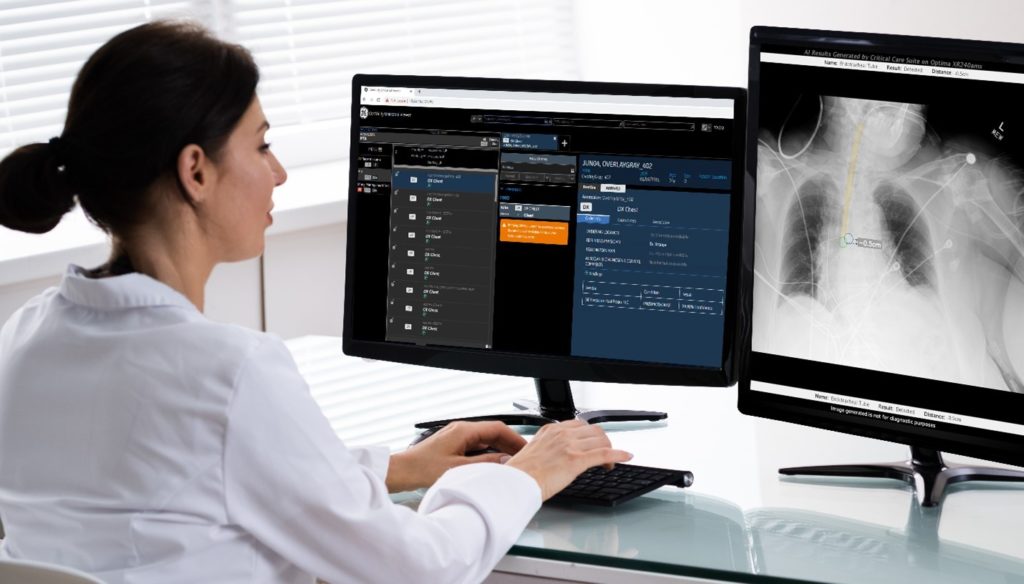Brought to you by GE Healthcare
Healthcare providers continue to feel pressure to do more with less in an era where healthcare is challenged by cost, quality, and access. The COVID-19 crisis has not only exacerbated many of the existing challenges in healthcare delivery, it has also increased the already taxing demands on healthcare providers. Limited resources and crowded emergency departments and trauma centers across the globe have highlighted the importance of quickly triaging patients toward the right treatment path. It is here, at the point of care, that imaging plays such a vital role, particularly when coupled with artificial intelligence (AI). A recent report found that nearly 60 percent of today’s cases are sent as urgent or STAT, creating added pressure.
To support reading and help enable worklist prioritization, AI tools can help to detect subtle or complex patterns within patient images with potential to improve efficiency, quality and clinical accuracy. While each exam is still reviewed by the radiologist, AI solutions can assist with case prioritization and help draw a finer separation between STAT and critical patients to allow timely reporting and more accurate patient management. In 90 seconds an AI algorithm in a Stanford-led study was able to read 420 chest X-rays for 14 pathologies with very high performance rates, while the radiologist took 3 hours on average. This study demonstrated that the AI solution could support the radiologist by placing critical results at the top of their read pile resulting in more efficiency.

There are also benefits to bringing AI to point of care for efficiency and improving image quality. At the point of care, the AI has been demonstrated to automatically orient each image properly, so the technologist does not have to do that extra work before sending the image to PACS. Intelligent quality checks and automation can reduce technologists’ user interface clicks, saving up to 70,000 “clicks” or three to four days a year. An AI algorithm can also quickly review the image taken against the imaging protocol that was ordered to ensure the correct image was taken, and call attention to image imperfections, such as a clipped lung, a common error. The technologist can correct these errors while the patient is still in the room. These solutions save a great deal of time for the technologist and may reduce the need for retakes by getting the right image for each patient. Embedding AI right on to a medical device makes this all possible without complex IT integrations.
Digital technology is now used to help determine root causes root causes of repeated or rejected images. These solutions are integrated right into the technologist’s standard workflow, enabling technologist actions–such as rejections or reprocessing–to occur at the patient’s bedside and before the images are sent to PACS. There are also analytics tools that allow technologists and department managers help identity root causes of rejected and repeated X-rays through software that can look at retrospective data. Quality and consistency of X-ray imagery facilitates better quality images being produced, leading to more accurate diagnosis of the patient and less rejected or repeated exams. The challenges of X-ray reject rates, or when scans are deemed unusable due to poor image quality, can pose an administrative nightmare, increasing cost, radiation dose, and inefficiencies. The burden is especially high for patients, who may need to take repeat exams to get the right scan of the right area at the right time.
Across different specialties the availability and adoption of AI applications is quickly growing. Impacts are evident in workflow improvements, as well as improvements in triage, diagnostics, and patient management. There are new AI applications that can help check the placement of Endotracheal Tube placement, ones to check Nasogastric Tube placement, Pneumothorax just to name a few. AI based tools are becoming a necessity to alleviate the time demands on radiology workflows, as well as provide clinical decision support to reading physicians. Deciding on the right platform will ease the implementation of existing and newly developed AI into a facility is crucial to their success.
